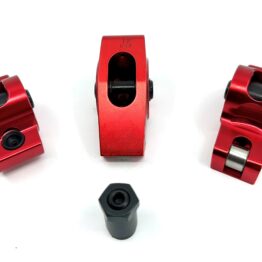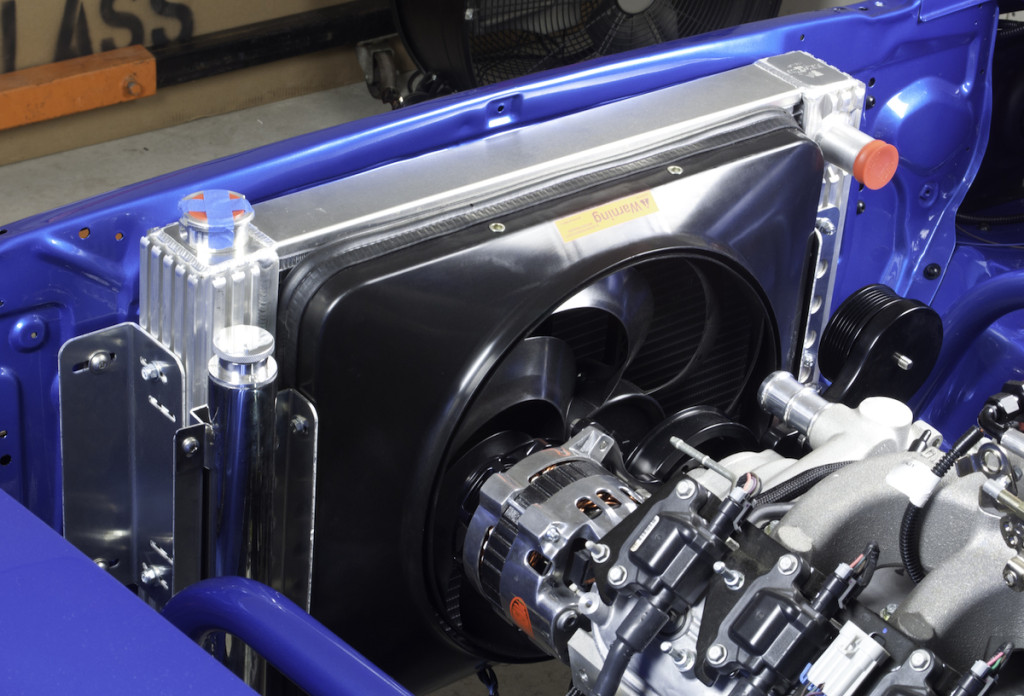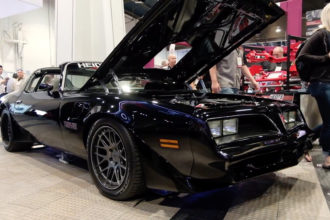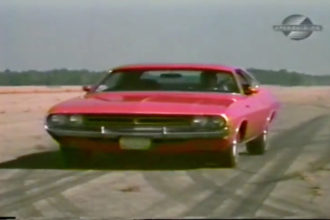Photography by: The Author
How to Keep Your Performance Car Cool
So you just built a hot new engine for your ride. You fill up the fluids, hit the key and take it for that first drive. Ahhh, the satisfaction of another increase in performance, the sound of the exhaust, the beauty of steam escaping from under the hood…wait, what’s that?!?
You’re in good company. Anyone who has modified cars for a period of time has come across a cooling problem. Sometimes just changing from exhaust manifolds to headers is enough to push a marginal cooling system over the edge. And if you’re working on a car that hasn’t had a new radiator in 20 years or more, you’re on borrowed time.
Beyond running into an overheating problem, you may also want to look at your cooling system as an opportunity to gain more performance at the rear wheels. If you’re running a belt-driven fan, you’re using engine power to spin it, power that could be used to spin your tires instead. How much power depends on what type of fan – a heavy seven-blade clutch fan moves a ton of air and requires a significant amount of force to turn when the clutch is engaged. And often switching from a belt-driven fan to an electric will also improve how well your cooling system works and give you a boost in fuel economy. That’s a combo that’s hard to beat.
What’s Your Problem?
One of the most challenging parts of creating a performance cooling system for your car is identifying where your problem lies. It’s tempting to dive in and start changing parts, but a little investigative work may save you time and money.
Here are a couple of rules of thumb; if your car keeps cool on the highway but overheats in traffic, you have an airflow problem, if your car overheats under both highway and traffic conditions, your radiator isn’t up to par. This is also true if your car runs cool until you get into situations where you’re making a lot of power; at a race for example.

If you run a belt-driven fan, you need to have a proper fan shroud to avoid overheating in traffic. This Chevy II has a shroud that covers the radiator core well, but the fan blades don’t protrude into the shroud. The blades should be half in and half out of the shroud for optimum airflow, and there should be approximately one inch of clearance between the tip of the fan blade and the shroud opening.
Also consider when the overheating started. If you’ve made changes that have added significant horsepower, then more engine heat can be expected. But we’ve also heard of overheating problems being caused by the ignition timing slipping 5-10 degrees, or switching to a carburetor that was much leaner. Think about what modifications you made just before the overheating started to see if it’s a cooling system issue at all.
Improving Airflow
If you’re only overheating in traffic and at low speeds, you need more airflow through the radiator. When you drive at highway speeds, you’re forcing more air through the radiator regardless of how much air the fan moves, but at slow speeds or at a stop, the only airflow is created by the fan. If you have a belt-driven fan, do you have a fan shroud? If not, this could be your problem, but even a properly-shrouded belt-driven fan may not move enough air at low engine rpm to cool your radiator. This is when an electric fan makes a nice cooling solution because it can spin at full speed, pulling maximum airflow, even when your engine is idling. Switching from a belt-driven fan to an electric one also gives you a performance benefit by completely removing the mechanical load of spinning the fan from the engine. This means more power to the wheels and even a fuel economy gain. Removing a belt-driven fan that mounts on the water pump also reduces the load on the pump. This can lengthen the life of the bearings in the water pump.
What if you already have an electric fan and you still have an overheating problem only in traffic? Then you probably don’t have the right electric fan. There are hundreds of different electric fans with different airflow specifications and mounting features. An electric fan that pulls 1,500 cfm isn’t going to keep 700 horsepower cool. You need to scale the cfm rating of the fan with the power output of the vehicle. But cfm isn’t the only factor. Pulling air through as much of the radiator as possible is important. That’s why the Flex-a-lite Black Magic Extreme fans and the company’s dual fan systems with full shrouds work so well. These pull air through a large surface area, and most of the dual fan systems pull between 2,500 and 6,000 cfm. The Black Magic Extreme is a single fan that pulls 3,300 cfm, which is plenty to keep most muscle cars cool, even if they have big-block engines.
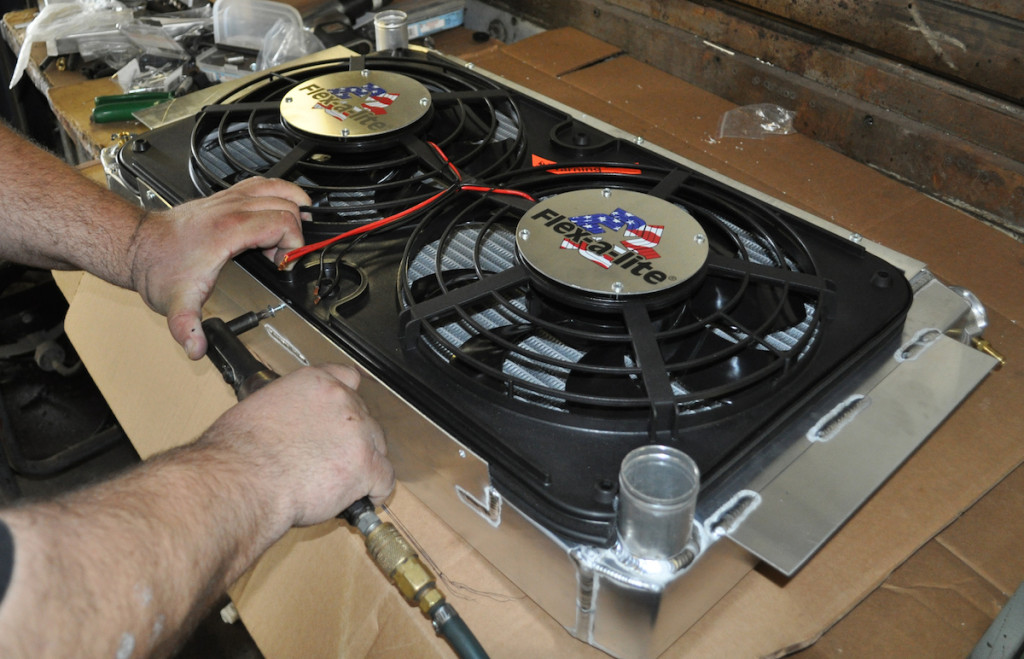
Converting to an electric fan is a good way to pick up some power and solve overheating issues at slow-speed or idle. Just like a mechanical fan, though, proper shrouding is very important. This Flex-a-lite dual fan has a rectangular shroud. The company offers many electric fans that cover a wide variety of radiator dimensions.
Radiator Technology
The radiator world has completely changed in the past 30 years. When the “golden age” muscle cars were rolling off the assembly line, a four-core brass and copper radiator was required to keep the big-blocks and Hemi-powered cars cool. Bigger was the only way to be better at that time. What we know now is that, while a four-core radiator might be good for holding a lot of coolant, it’s not that good at letting air flow through the core to transfer the heat to the atmosphere. The thick core is very restrictive when you try to pull air through it with a fan. That’s why new cars went to two-core construction in the ‘90s, with tubes that measured 1-inch wide instead of the traditional 3/8-inch. Most performance aftermarket radiators now have the same two-core design, with 1-inch tubes.
Over the past couple of decades, aluminum has become a favorite material for radiators, but do you want to know a secret? Aluminum isn’t the most efficient material for heat transfer. When it comes to radiators, brass and copper is. Aluminum is favored now because it’s lightweight, and frankly it looks cool. About six years ago, though, Flex-a-Lite introduced a patented Flex-a-fit radiator sidetank design that greatly improved the efficiency of heat transfer while maintaining aluminum radiator construction. The key is an extruded sidetank profile that creates cooling fins on the inside and outside. On the inside, these fins increase surface contact with the coolant. On the outside, there is greater contact surface with the air. The sidetanks are 135 percent more efficient at transferring heat than a sheet-aluminum sidetank found in most aftermarket radiators, and it is even 41 percent more efficient than a brass radiator tank. The outer fins form channels that T-bolts fit in to make mounting electric fans, brackets and all sorts of things easy to attach to the strong sidetanks.
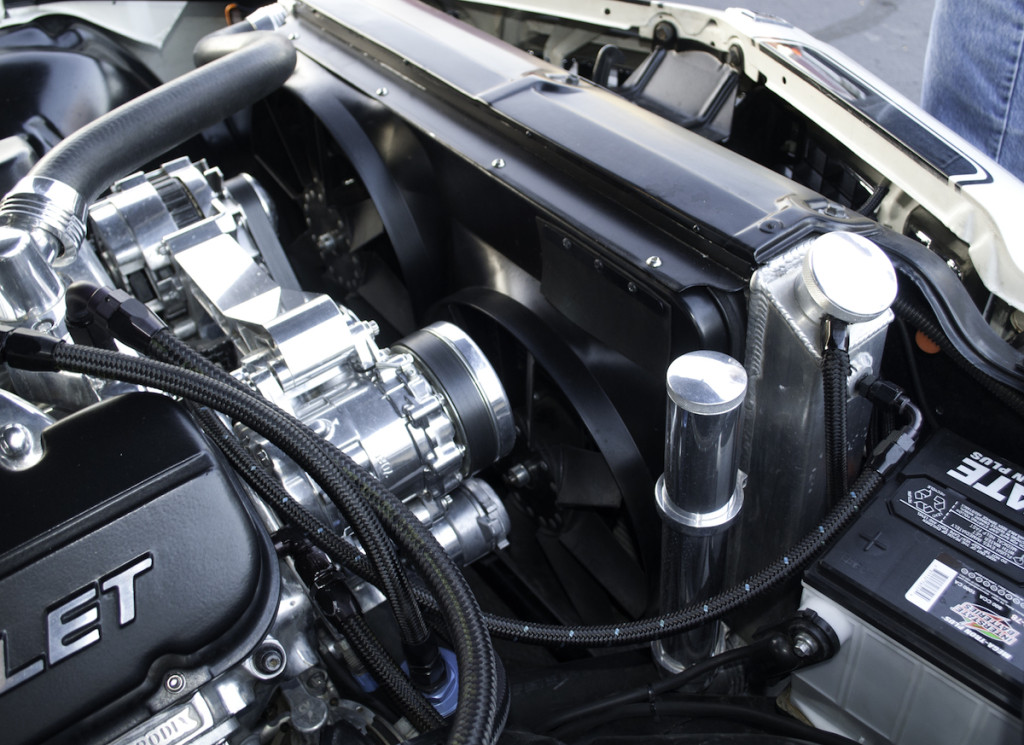
Airflow is the key measurement for determining the cooling capability of an electric fan. Fans that pull between 2,500 and 3,300 cfm will keep most street engines cool. This Flex-a-lite setup uses a variable speed controller that adjusts the fan speed as temperature rises. This results in airflow of 2,740-4,600 cfm, which will keep just about any car cool!
Radiator and Fan Combos
An ideal way to purchase a radiator and electric fan that you know will work together is to purchase a combo from a manufacturer. The company has determined which fan fits the radiator best, and will provide enough overall heat transfer (aka cooling). There are two flavors of these combos: direct fit and universal. A direct fit radiator and fan combo will bolt right into a specific car. For example Flex-a-lite offers Flex-a-fit radiator and electric fan combos for Camaros, Mustangs and other models. These come completely assembled and in most cases retain all of the factory fasteners and mounting locations. Since they manufacture both the fan and the radiator, they engineered them to fit to each other perfectly, optimizing the cooling that is possible.
It doesn’t get much easier than this for installation, as well as to know that you have enough radiator and airflow to keep your performance car cool.
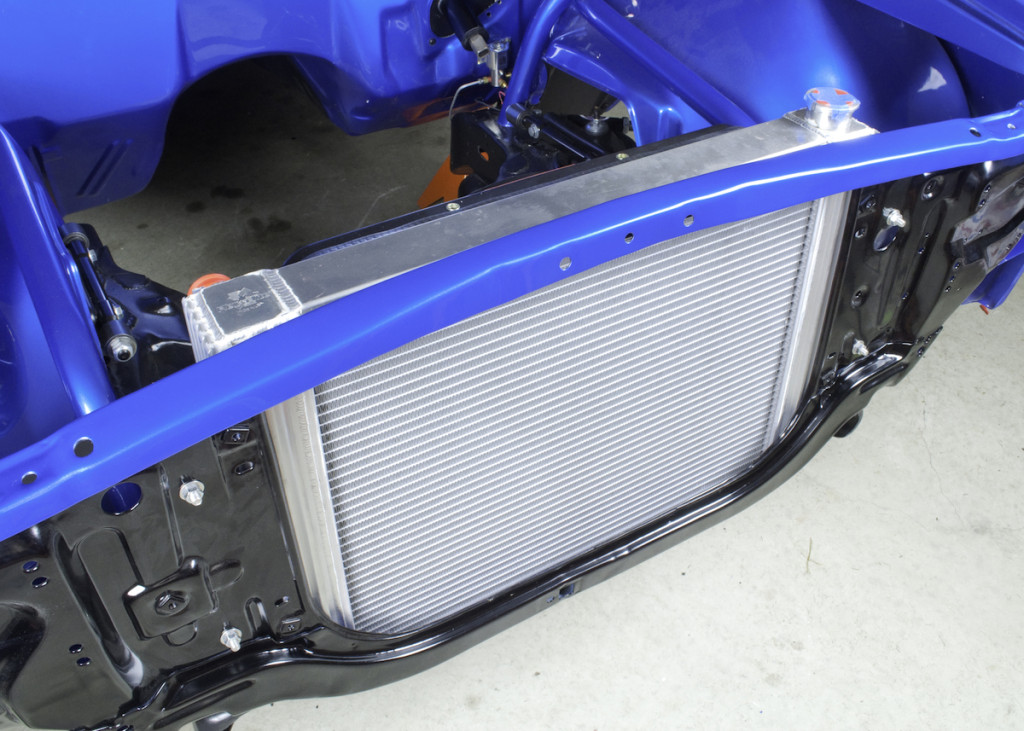
If your car runs hot all the time, not just at idle, your problem is most likely an insufficient or failing radiator. Radiators deteriorate over time, but most of the time we make performance improvements to the engine to make more power and forget that more power means more heat.
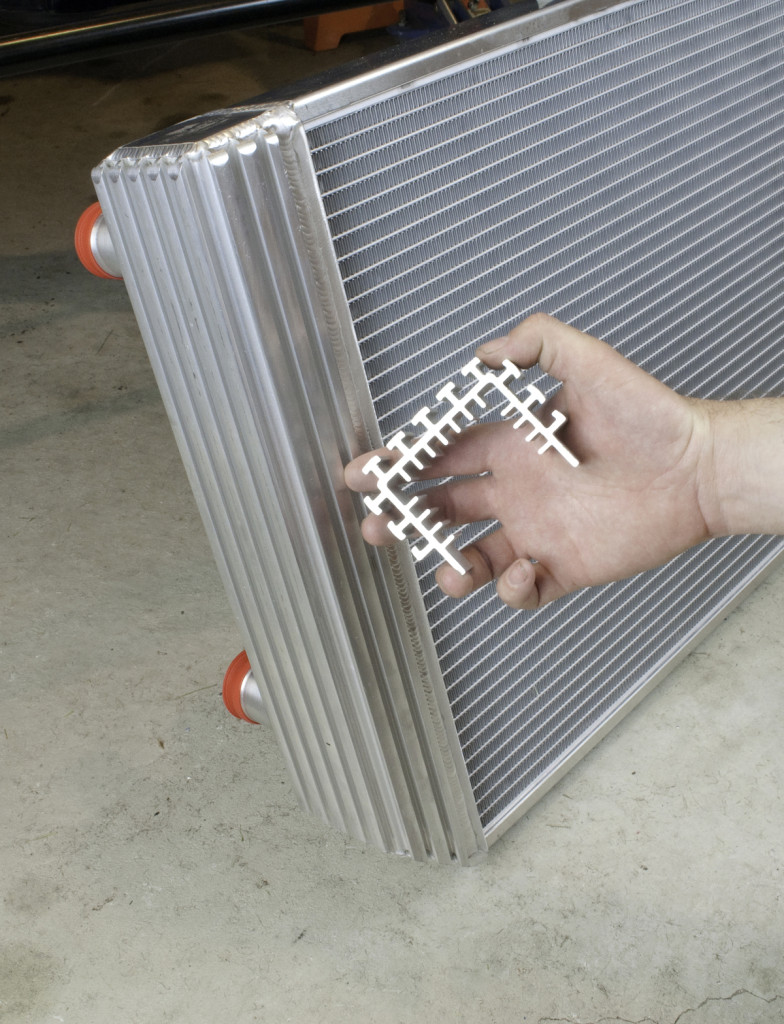
The Flex-a-fit radiator from Flex-a-lite features a patented sidetank design which incorporates cooling fins on the inside and outside. This significantly increases surface contact for better heat transfer. It also makes mounting the radiator brackets, an electric fan and other accessories a breeze, using T-bolts to slide into the channels.
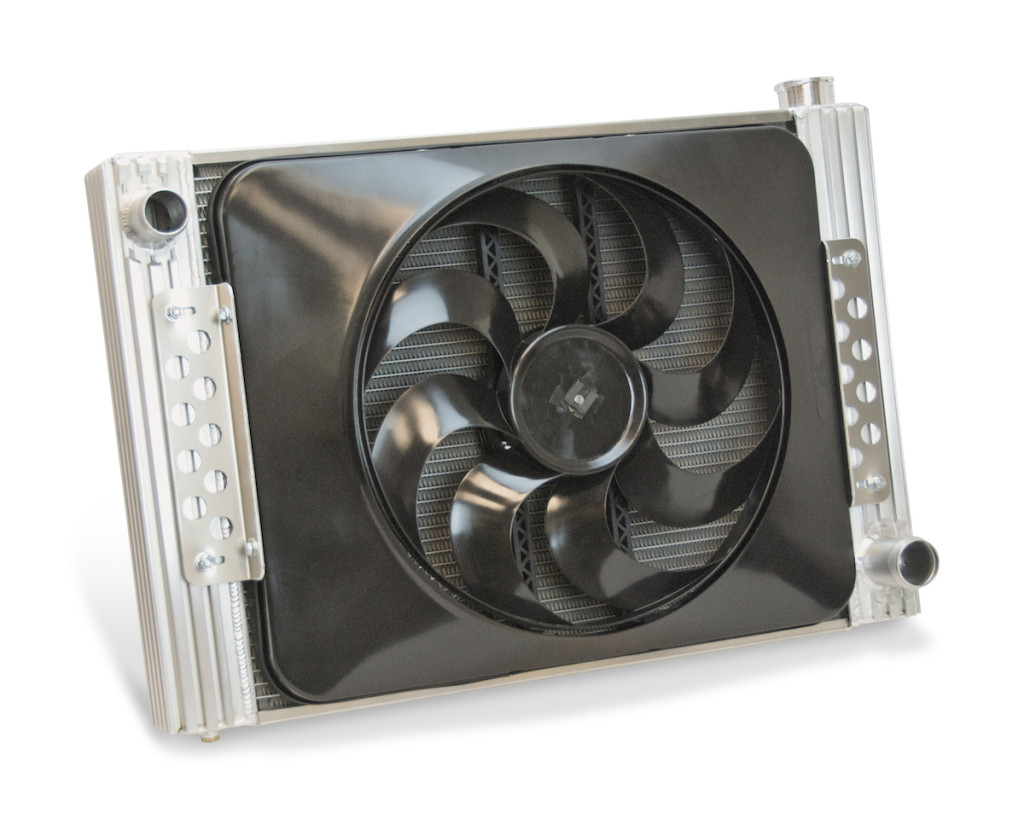
Flex-a-lite makes quite a few direct-fit radiator and electric fan combos. This one fits ’67-’69 Camaros, and the company also makes them for most Mustangs, later-model Camaros and other models. They also offer a couple dozen universal-fit radiator and fan combos. You can order the radiator without the electric fan. (photo courtesy of Flex-A-Lite)
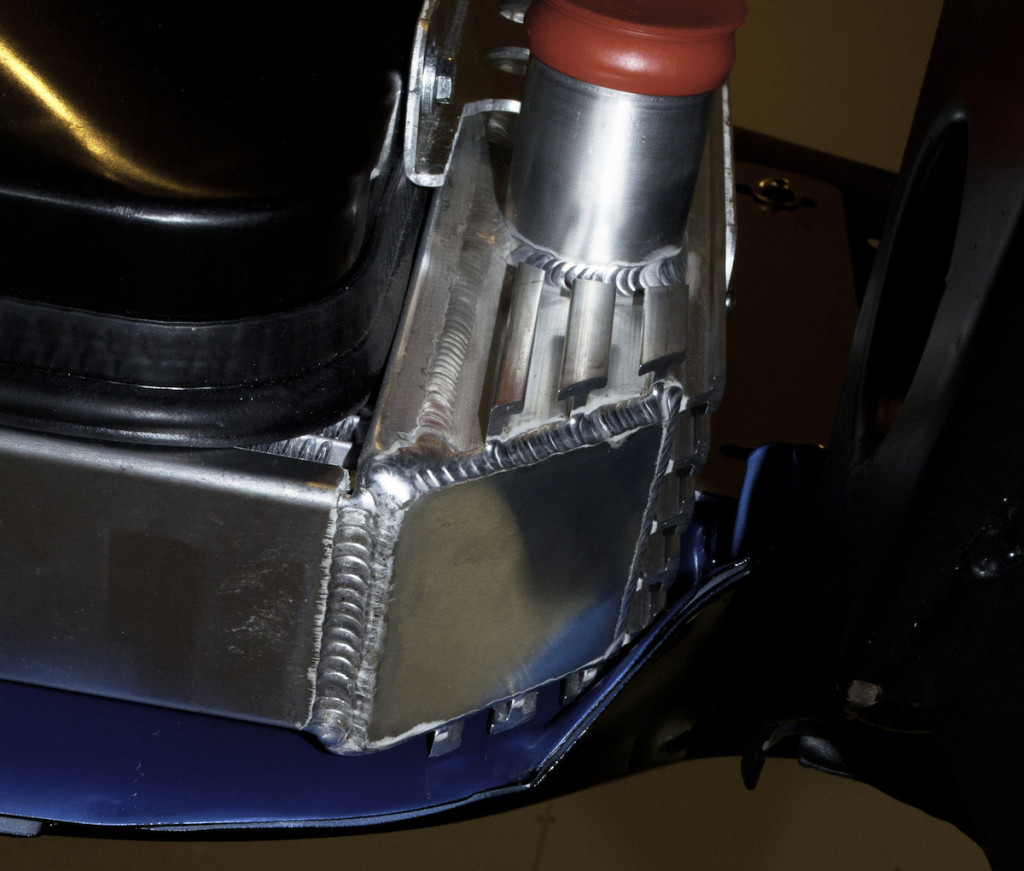
You can also order a custom radiator. This ’66 Chevelle needed a bit more clearance at the bottom to clear the area where the core support bolts to the frame. A 45-degree angle at the bottom of the side tank was exactly what was needed. The inlets and outlets were also placed on the same side of the radiator for an LS engine swap.
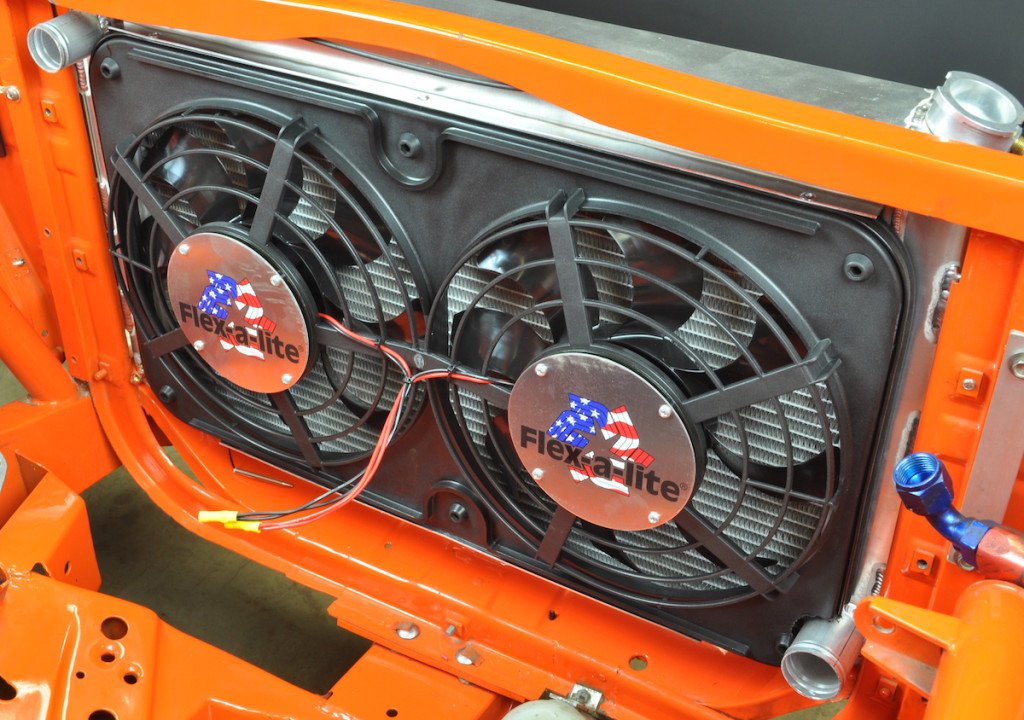
The cooling system is a vital part of building a performance car. Matching the heat transfer capability of both the radiator and the fan to the engine will result in a car and a car owner that doesn’t lose his cool.
Bringing years of editorial, photographic and technical experience to the table, Cole Quinnell is a name you’re more than likely familiar with if you’ve ever picked up a car mag at your local newsstand. He spends much of his free time behind the wheel of his LS-powered ’66 Chevelle and his killer off-road Jeep!






